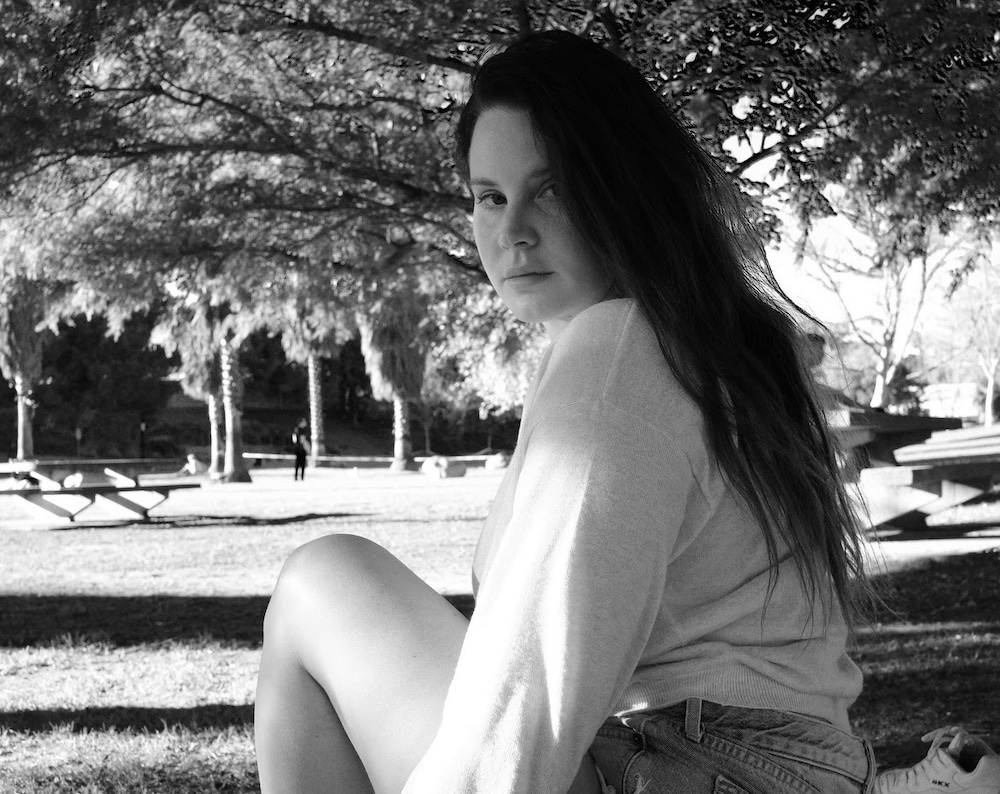
One of the hallmarks of Lana Del Rey’s songwriting is the impeccable way her music composition buttresses her lyrics. On the line, “ended up we fuck on the hotel floor,” the phrase concludes with Lana sliding down from a D to a B♭ (a Major third interval) in her melody, over a G♭ chord root. This combination yields a G♭ augmented triad — i.e., a G♭ Major chord but with the 5th raised a half step. Augmented triads (denoted with a “+” symbol) possess a sound that we could describe as “enigmatic,” or even “troubled” (depending on the harmonic framework), and these unstable chords carry a lot of dramatic tension. In the context of the “A&W” chorus, the surprising G♭+ chord perfectly represents the unexpected turn in the lyric, which helps to make Lana’s narrative feel believable.
In his iconic score for Alfred Hitchcock’s 1958 film Vertigo, composer Bernard Herrmann featured this same chord, a G♭+, as a central part of the spellbinding hook in the film’s title music. It invokes a deeply unsettling, anxious effect. Have a listen:
At the end of the “A&W” chorus, Lana sings, “It’s not about having someone to love me anymore/ This is the experience of being an American whore.” On these two lines, the lead vocal collapses down to her single-tracked voice and she returns to the lower mezzo-soprano range we heard in the beginning of the verse, imparting a sense of intimacy. Lana bases these melodic lines entirely on the flat-7th (A♭) and 1st (B♭) scale degrees. This understated melody, using the austere Major 2nd interval, perfectly underscores the lyrics she’s singing. The simplicity conveys starkness and beauty. It imbues the passage with a sense of authenticity, making it feel emotionally convincing.
Where Do We Go From Here?
After the second verse and chorus, the song moves into what might sound like a kind of coda — one that begins delicately, even ethereally. But it soon wanders in a surprisingly ominous direction. Sam Dew is credited as one of three songwriters on “A&W,” and perhaps it is here where we find his contributions.
The organic instruments we’ve heard up to this point in the song give way to Jack Antonoff’s menacing Moog bass and synth pads fed through an arpeggiator. We’ve drifted into an entirely different sonic world – a foreboding one, replete with 808 trap beats, a portamento synth bass, and filter sweeps. Are we still listening to “A&W”? Indeed, they stitched what sounds like an entirely new song on to the end, segueing to the new section via a 3-bar ritardando (gradual decrease in tempo) in Pro Tools. There’s a kind of tempo-mapping sleight-of-hand here, as the slowdown morphs into a new quasi-hip-hop beat at a deceptively faster tempo (164 bpm, up from 156.1 bpm). The song modulates up a whole step from Bb to C, and it’s here’s that we meet a character named Jimmy. See Figure 7, below.


 63
63